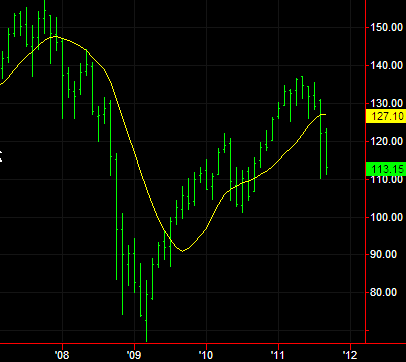If anyone is still watching: September has closed out, and the entire bar was below the 12-month average. This model has now officially switched to a "bear" mode. In the past 50 years a "short trade" in bear mode would have won only 1/3 of the time, but that's because many of those 50 years were during a hyper-bull market. In a bull market the "bear" signal might miss a little bit of the resumption of the bull move, but it tends to reduce the volatility of the portfolio. In a bear or sideways market, the "bear mode" can avoid significant drawdowns.
For anyone wondering, I've lightened up my stock positions considerably, dropping some stocks that had already lost quite a bit and I should have exited weeks ago. Many of my remaining stocks are metals and mining stocks, which are getting hit but should do OK if gold/silver wake up again, energy stocks, and high-dividend REIT stocks like NLY. I also have some SDS (-2x SPY) and FAZ (-3x financials) which are doing OK as the market tanks. Those are basically hedges on the rest of the portfolio.
I haven't been spending much time here lately -- too many other demands on my time. Now that the model has switched modes, I think I'll bow out. Cheers all.
For anyone wondering, I've lightened up my stock positions considerably, dropping some stocks that had already lost quite a bit and I should have exited weeks ago. Many of my remaining stocks are metals and mining stocks, which are getting hit but should do OK if gold/silver wake up again, energy stocks, and high-dividend REIT stocks like NLY. I also have some SDS (-2x SPY) and FAZ (-3x financials) which are doing OK as the market tanks. Those are basically hedges on the rest of the portfolio.
I haven't been spending much time here lately -- too many other demands on my time. Now that the model has switched modes, I think I'll bow out. Cheers all.

